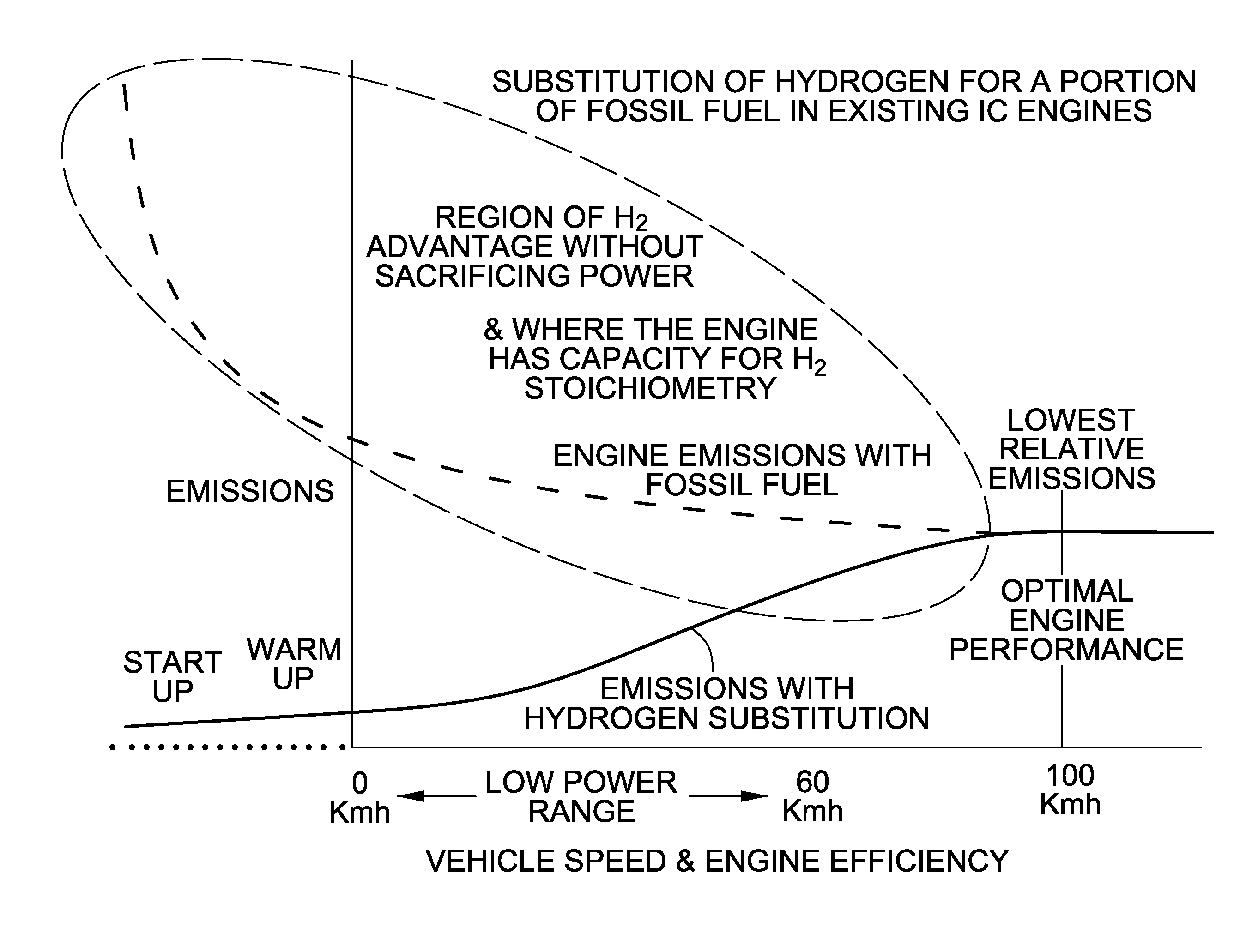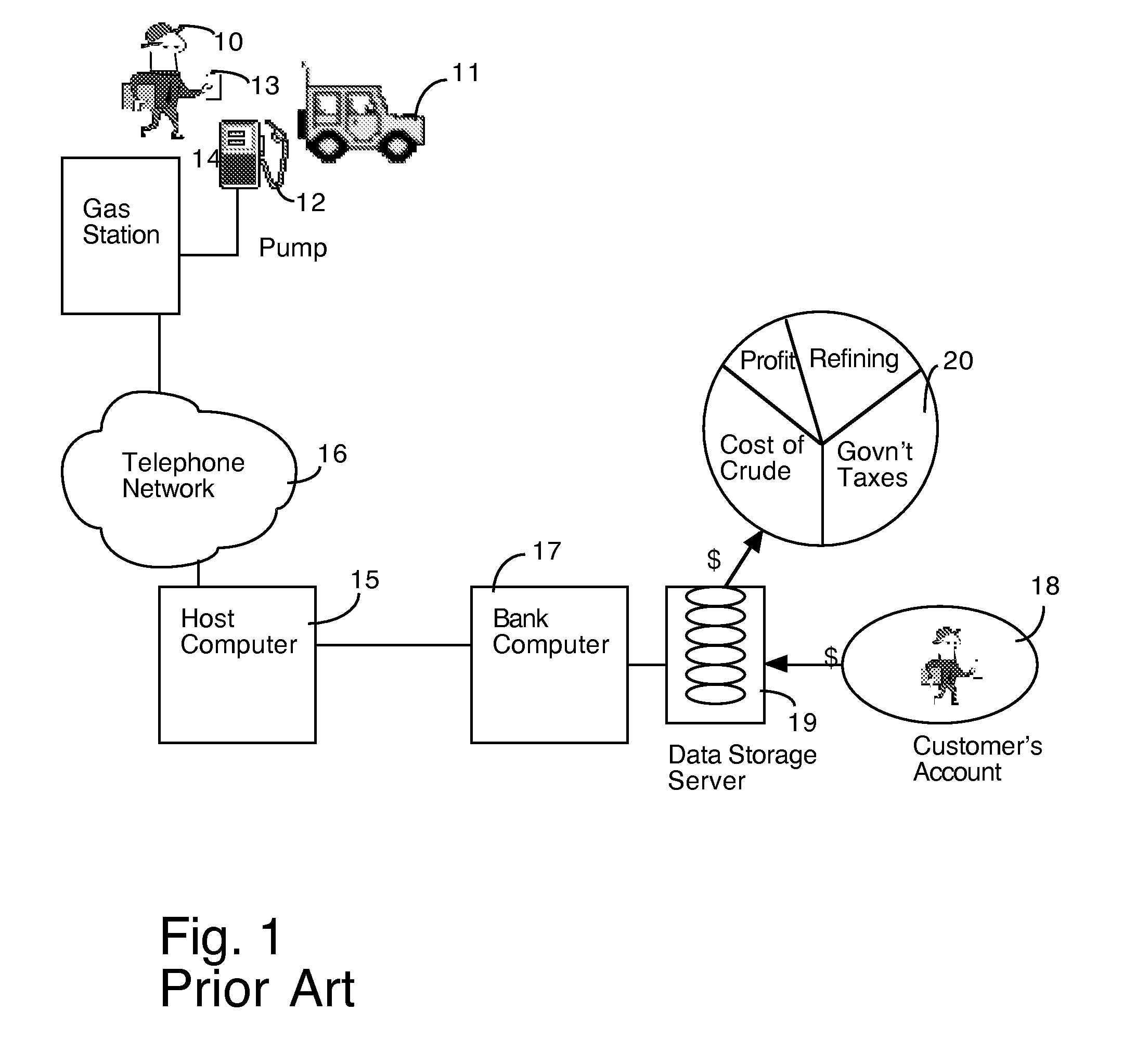System and method for determining and brokering fuel emission offsets
a technology of emission offsets and fuel, applied in finance, instruments, data processing applications, etc., can solve the problems of not providing offsets, reducing the sale of new vehicles, and not helping the automotive industry, so as to reduce the cost of fueling charges, reduce the cost per calorific equivalent, and save fueling costs
- Summary
- Abstract
- Description
- Claims
- Application Information
AI Technical Summary
Benefits of technology
Problems solved by technology
Method used
Image
Examples
Embodiment Construction
[0034]As indicated above, the substitution of fossil fuels for hydrogen cannot be accomplished economically unless there are incentives from government agencies (which have control over the tax structures for fuels), to all of the energy industry, the automotive industry and the end user, i.e. the consumer. Given the current lack of such incentives, the objective of promoting, using and supplying a source of hydrogen remains. With the use of the system and method of the present invention, brokering of emission offsets is provided to end users of fossil fuels while providing an incentive to make use of emission reducing fuels and retrofits for existing IC engines. Further, the added incentive of end users to make use of such emission reducing fuels and engine retrofits will continue to be of benefit to the oil and gas and, in fact, coal industries.
[0035]Referring now to FIG. 1, we have shown a block diagram illustrating refueling transaction at it occurs today. An end user 10 desires...
PUM
 Login to View More
Login to View More Abstract
Description
Claims
Application Information
 Login to View More
Login to View More - R&D
- Intellectual Property
- Life Sciences
- Materials
- Tech Scout
- Unparalleled Data Quality
- Higher Quality Content
- 60% Fewer Hallucinations
Browse by: Latest US Patents, China's latest patents, Technical Efficacy Thesaurus, Application Domain, Technology Topic, Popular Technical Reports.
© 2025 PatSnap. All rights reserved.Legal|Privacy policy|Modern Slavery Act Transparency Statement|Sitemap|About US| Contact US: help@patsnap.com



